Are you tired of perennials with the usual round flowers and mounding habit? Looking for an accent, something that screams “wowee zowee” but doesn’t take up much real estate? Like butterflies to boot? Liatris, or blazing star, is one of the most unique native prairie perennials, sort of a statement plant. Its name means “crowded” in Greek, owing to the tight clusters of flowers that bloom from top to bottom in succession over about two weeks — and perhaps by the number of insects that flock to it! Keep reading, my friend — I have the species for you.
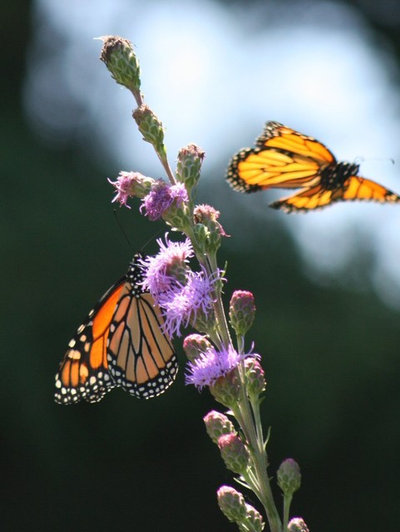
Benjamin Vogt / Monarch Gardens
Botanical name: Liatris spp
Common name: Blazing star; meadow, prairie or rough blazing star
USDA zones: 3 to 8, except
L. ligulistylis, which is 3 to 6 (find your zone)
Water requirement: L. pycnostachya and
L. ligulistylis prefer moist to medium soil; the others, medium to dry; all take loam and clay soil.
Light requirement: Full sun to some shade
Mature size: 3 to 4 feet tall and 1 foot wide
Benefits and tolerances: Attracts butterflies, birds and beneficial bees by the dozens; adaptable.
Seasonal interest: Planting all of the above Liatris species provides flowers from early July to late September (in zone 5); good winter interest.
When to plant: Early spring to late fall; mulch well in late fall to prevent frost heave.
Shown here: Liatris ligulistylis is a Monarch butterfly magnet. It blooms in August for one to two weeks, in moist, medium and even dry soil in full to partial sun. You don’t need much space for this plant; 6 inches of ground is just fine.
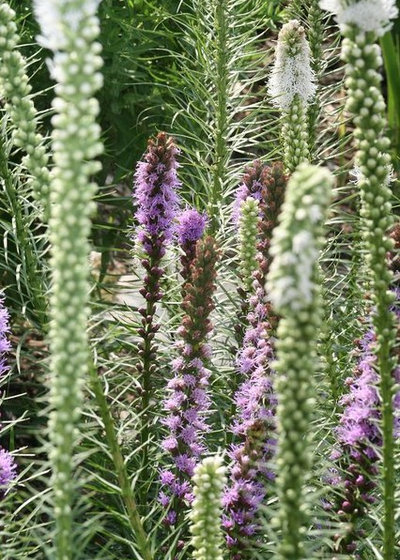
Benjamin Vogt / Monarch Gardens
Distinguishing traits. Liatris comes in many flower styles, but mostly in the colors of white and purple. White looks great on moonlit evenings.
Shown here: Liatris pycnostachya, both the purple species and the 'Alba' cultivar.
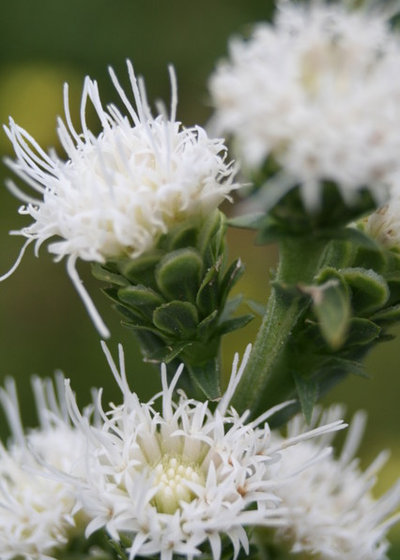
Benjamin Vogt / Monarch Gardens
A closeup of
Liatris scariosa 'Alba'. Its growing conditions and size are similar to other Liatris species, but the blooms are certainly more unique. Scariosa blooms in August.
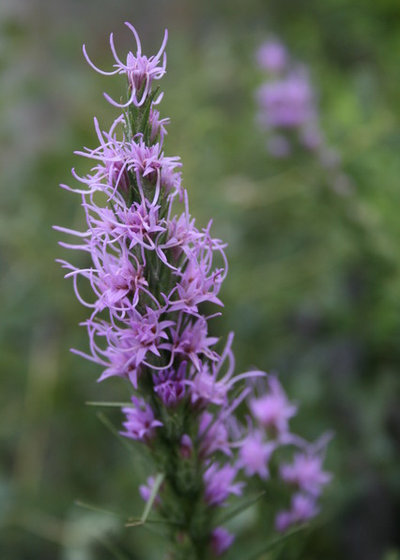
Benjamin Vogt / Monarch Gardens
If height isn't your thing, try
Liatris punctata, which is 12 to 18 inches tall and wide. It thrives on dry to medium clay, in full to partial sun, often sending its spikes winding through other plants from August into September.
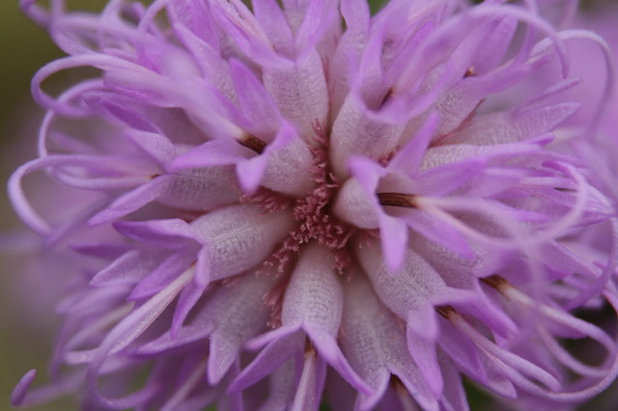
Benjamin Vogt / Monarch Gardens
A closeup of
Liatris aspera, a dry-loving perennial that looks similar to
L. ligulistylis but blooms weeks later, in mid-September (zone 5). All Liatris varieties are quite versatile, with thin, needle-like leaves that gently mound near the soil surface.
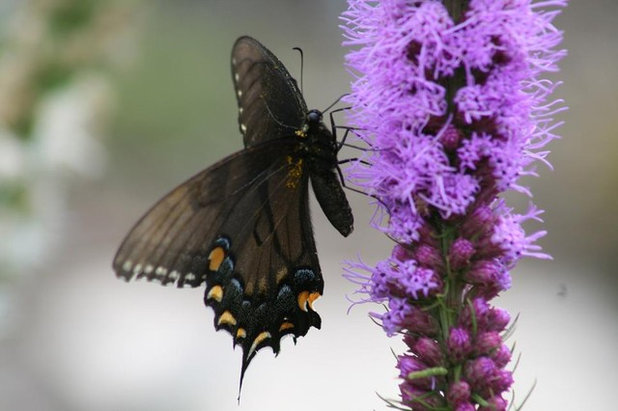
Benjamin Vogt / Monarch Gardens
Here's a swallowtail on
Liatris pycnostachya. This flower blooms in midsummer (zone 5), lasting about a week, opening flowers from top to bottom on 3- to 4-foot-tall spikes. Medium clay soil and full sun are best, though there's certainly wiggle room on where it can go. For each Liatris species, a nice clump of about 1 square foot forms, providing several flowering stalks after a few years.
How to use it. Liatris can go anywhere. It can be planted in groups, of course, but works even better as a surprise accent scattered among contrasting plants like asters, grasses, coneflowers and bee balm.
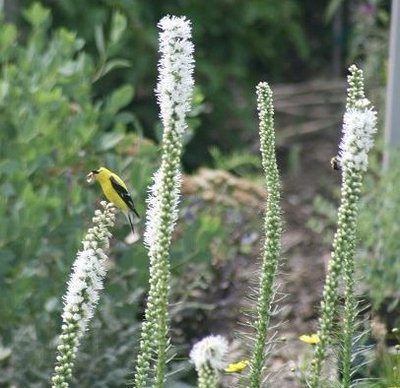
Benjamin Vogt / Monarch Gardens
Planting notes. Goldfinches usually adore the winter seed of Liatris, but here this fellow is gathering a summer bouquet for his sweetheart, I assume. Don't deadhead Liatris — you won't get new blooms, and you'll hurt that winter interest.
Most Liatris varieties have a kind of small rhizome similar to that of irises, which makes it easier to plant it in late fall along with spring-blooming bulbs like crocus and tulips. Planting the rhizome an inch or two below the soil surface is best — higher in clay, lower in loamy and sandy soil (but you will have to experiment, as each garden is always different).





